NATALIA NIKOLAEVNA FEDOROVA
Khristianovich Institute of Theoretical and Applied Mechanics, Siberian Division of Russian Academy of Sciences Institutskaya
The main scientific activity of N.N. Fedorova is connected with Computational Fluid Dynamics. Her first (Ph.D.) dissertation defended in 1985 was about qualitative properties of convection-diffusion equation with sign-changing viscosity coefficient. The topic of the second dissertation (2004) was mathematical modelling of turbulent separated flows. The computational methods have been elaborated to simulate gas and fluid flows. Numerous simulations of the Shock Wave/ Turbulent Boundary Layer Interactions have been carried out in a wide range of flow parameters. She has a significant teaching experience. Main topics of her lectures are Numerical Methods, Computational Fluid Dynamics, Computer Sciences. At present, N.N. Fedorova deals with the implementation of modern CAE tools into the scientific research and engineering education.
Simulations of high-speed turbulent separated flows
The paper presents the survey of numerical investigations performed by the author’s team during last two decades using the original in-house code and the commercial software (ANSYS Fluent) as well. The computations were carried out on the basis of Favre-averaged Navier Stokes equations complemented with popular semi-empirical turbulences models. Numerous examples of turbulent supersonic flows in vicinity of simple basic configurations (ramps, nozzles, forward- and backward facing steps, impinging shocks etc.) as well as their compositions (double ramp, inlets and channels of variable cross-sections) were simulated. Such configurations are typical elements of flying vehicles so good prediction of flow peculiarities is of a great importance for vehicle design and optimization.
For the most of the configurations under investigation, the separation due to the Shock Wave/ Turbulent Boundary Layer Interaction is a critical feature influencing the dynamic and temperature loads on the vehicle. In many cases, especially in turbulent flows, the simulations fail to predict the flow parameters in the separation regions as well as the extent of the separation region. From this point, the validation and verification are necessary steps of the design and optimization procedures.
In the paper, the experimental data obtained in various facilities are used to test the simulation results. On the basis of the simulations, the details of the complex structure of turbulent separated flows are analyzed. Influence of flow parameters (Mach and Reynolds numbers, temperature factor etc.) is studied. Some examples of the simulations of high-enthalpy reacting supersonic flows in a channel are demonstrated that are of great importance for a scramjet combustion chamber design.




